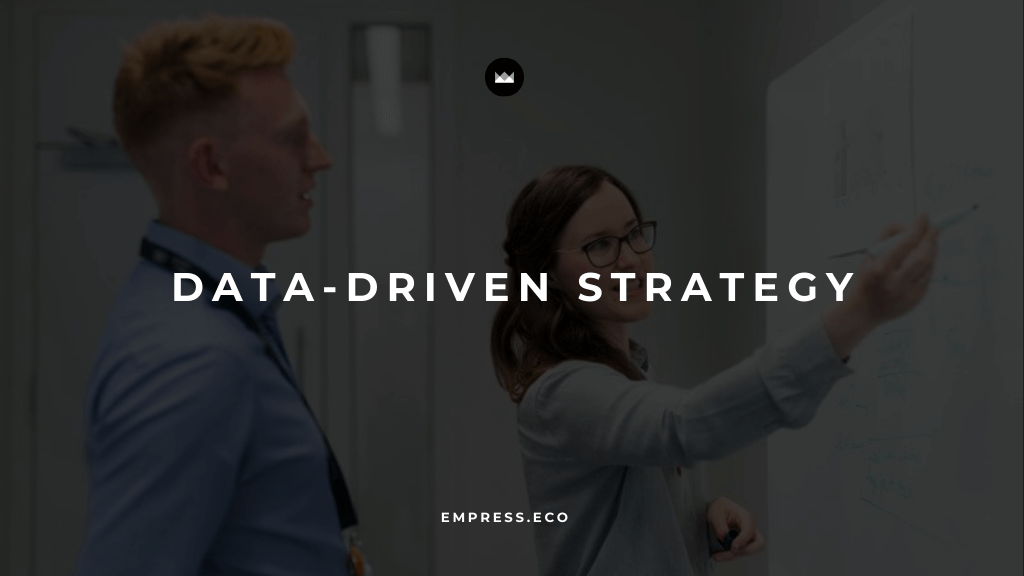
Elevate Your Brand with BLOOM’s Data-Driven, Strategic Content Solutions
Unlock actionable insights and optimize your content for lasting success.
Table of Contents
Leveraging data to inform your content strategy is essential for driving growth and achieving long-term success. A data-driven content strategy enables businesses to create targeted, relevant, and impactful content that resonates with their audience. This blog explores the importance of data-driven content strategies and provides actionable steps to elevate your brand by unlocking actionable insights and optimizing your content.
Understanding Data-Driven Content Strategy
A data-driven content strategy involves using quantitative and qualitative data to guide the creation, distribution, and evaluation of content. This approach ensures that your content aligns with audience needs, trends, and organizational goals, making your marketing efforts more effective and measurable.
Benefits of Data-Driven Content Strategy
Enhanced Audience Targeting
Data-driven strategies allow you to understand your audience’s preferences, behaviors, and pain points. This insight enables you to create personalized content that resonates with your target audience, leading to higher engagement and conversion rates.
- Precision Targeting: Tailor your content to specific audience segments for maximum relevance and impact.
Improved Content Relevance
By analyzing data, you can identify trending topics and popular content formats that appeal to your audience. This ensures that your content remains relevant and valuable, increasing its impact and reach.
- Trend Analysis: Use data to stay ahead of industry trends and keep your content fresh and engaging.
Increased ROI
Data-driven content strategies help optimize resource allocation by focusing on high-impact content. This leads to better performance and higher returns on investment (ROI) for your marketing efforts.
- Efficiency and Effectiveness: Invest in content that delivers the highest returns.
Continuous Optimization
Data provides ongoing insights into content performance, allowing you to make data-backed adjustments and improvements. This continuous optimization ensures that your content strategy evolves with changing audience preferences and market trends.
- Iterative Improvement: Regularly refine your strategy based on performance metrics and feedback.
Key Strategies for Implementing Data-Driven Content
Set Clear Objectives
Define specific, measurable, achievable, relevant, and time-bound (SMART) goals for your content strategy. These objectives should align with your overall business goals and provide a clear direction for your content efforts.
Examples of Objectives:
- Increase website traffic by 30% in six months.
- Boost social media engagement by 25% in three months.
- Generate 100 new leads per month through content marketing.
- Goal Setting: Establish clear targets to guide your content strategy and measure success.
Understand Your Audience
Conduct thorough research to understand your target audience’s demographics, preferences, and behaviors. Create detailed buyer personas to guide your content creation and ensure it meets the needs and interests of your audience.
Steps to Understand Your Audience:
- Surveys and Interviews: Gather direct feedback from your audience.
- Analytics: Use tools like Google Analytics and social media insights.
- Competitor Analysis: Study your competitors’ strategies to identify gaps and opportunities.
- Audience Insights: Develop a deep understanding of your audience to create content that resonates.
Leverage Data for Content Creation
Use data to inform your content creation process. Identify trending topics, popular formats, and high-performing content to guide your efforts. Ensure your content is backed by credible data to build trust and authority.
Examples of Data Sources:
- Google Trends: Identify trending topics and search queries.
- BuzzSumo: Discover popular content and influencers in your industry.
- CRM Systems: Analyze customer data to understand preferences and behaviors.
- Data-Driven Creation: Base your content decisions on solid data to enhance relevance and effectiveness.
Optimize Content for SEO
Implement SEO best practices to ensure your content is discoverable by search engines and reaches a wider audience. This includes keyword research, on-page optimization, and building backlinks.
SEO Optimization Tips:
- Keyword Research: Identify relevant keywords and incorporate them naturally into your content.
- On-Page SEO: Optimize title tags, meta descriptions, headers, and URL structures.
- Backlinks: Build high-quality backlinks to improve your site’s authority and search rankings.
- SEO Best Practices: Enhance your content’s visibility and reach through effective SEO techniques.
Utilize Visuals and Interactive Elements
Incorporate visuals and interactive elements to make your data-driven content more engaging and easier to understand. Visual representations of data, such as infographics and charts, can enhance comprehension and retention.
Examples of Visual Content:
- Infographics: Simplify complex data and make it visually appealing.
- Videos: Create engaging visual content to capture attention.
- Interactive Tools: Use quizzes, calculators, and other interactive elements to engage your audience.
- Visual Engagement: Boost audience engagement with visually appealing and interactive content.
Overcoming Challenges in Data-Driven Content Strategy
Ensuring Data Quality
High-quality data is essential for effective content strategies. Invest in data cleansing and enrichment processes to maintain accurate and up-to-date information.
- Data Integrity: Ensure the accuracy and reliability of your data for informed decision-making.
Balancing Data and Creativity
While data provides valuable insights, maintaining a balance between data-driven decisions and creative intuition is crucial. Ensure that your content remains authentic and engaging while being informed by data.
- Creative Balance: Blend data insights with creative flair to produce compelling content.
Managing Resource Constraints
Implementing a data-driven content strategy can be resource-intensive. Allocate resources effectively and use automation tools to streamline processes and optimize efficiency.
- Resource Management: Efficiently manage resources to maximize the impact of your content strategy.
Case Studies: Successful Data-Driven Content Strategies
CSS Insurance’s Data-Driven Health Content
CSS Insurance used data-driven content marketing to deliver relevant, valuable content to its target group. By analyzing search trends and user behavior, CSS doubled blog traffic and significantly reduced cost-per-conversion, surpassing their engagement targets.
- Effective Implementation: Demonstrates the power of data-driven content in achieving business goals.
Nike’s Personalized Marketing Campaigns
Nike leverages data to analyze customer behavior and create personalized marketing campaigns. This data-driven approach has increased customer engagement and loyalty, driving significant growth for the brand.
- Personalization Success: Showcases how data-driven personalization enhances customer relationships and drives growth.
Conclusion
A data-driven content strategy is essential for elevating your brand and achieving lasting success. By setting clear objectives, understanding your audience, leveraging data for content creation, optimizing for SEO, and incorporating visuals, businesses can create impactful and engaging content. Overcoming challenges such as data quality and resource constraints ensures that your strategy remains effective and adaptable.
As the digital landscape continues to evolve, embracing data-driven content strategies will be crucial for maintaining a competitive edge and driving growth. Start leveraging the power of data today to unlock actionable insights and optimize your content for lasting success.
Empress Newsletter
Join the newsletter to receive the latest updates in your inbox.







